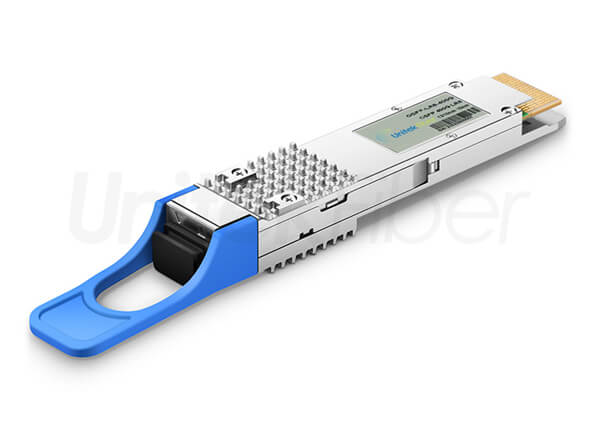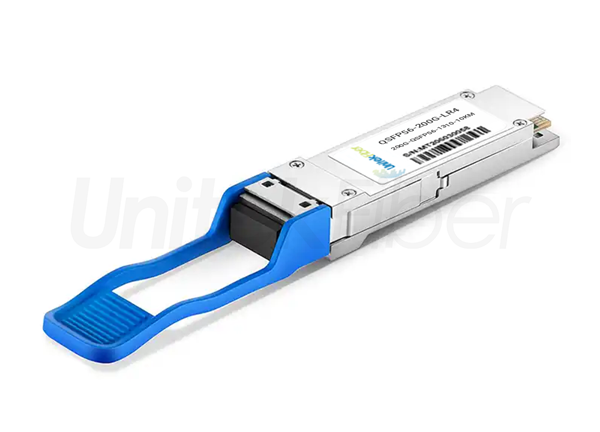
In the era of data-driven technology and high-speed communications, the demand for faster, more reliable networks is more urgent than ever. The rapid growth of cloud computing, big data, and artificial intelligence is driving a continued increase in bandwidth demand, requiring enterprises and service providers to keep pace through advanced Ethernet technology. This has sparked a discussion on how 800G fiber optical modules can provide technical solutions that meet the stringent speed and efficiency requirements of next-generation high-performance applications.

Data traffic is growing exponentially, and traditional network speeds can no longer keep up with the surging demand for data processing and transmission. To address this challenge, the industry is rapidly advancing toward 800G transceiver modules. While 400G fiber module maintained a significant market share until 2023, 800G will become the mainstream standard by 2025. The key drivers behind this network speed evolution include:
Data Center Modernization: With the widespread adoption of cloud computing services, data centers must upgrade their interconnect architectures to handle massive data volumes with greater efficiency.
High-Performance Computing and AI: HPC and AI applications rely on ultra-high-speed data transmission to process vast datasets and execute complex computations, requiring higher network bandwidth and lower latency.
Telecom Network Expansion: As 5G deployment accelerates, telecom operators require faster backhaul links to support growing mobile data traffic and emerging services.

In 800G short-reach applications, traditional multimode fiber is limited to transmission distances of less than 50m, and even with the latest OM4 or OM5 multimode fibers, achieving 100 meters remains challenging. Given these constraints, the 800G Pluggable Optical Module Working Group has decided to abandon VCSEL-based multimode designs in favor of PSM8 (Parallel Single-Mode 8-channel) technology, which utilizes single-mode fibers to enable longer-distance high-speed transmission.
To support ultra-high-speed 800G SR8 transmission, PAM4 modulation and high-performance DSP (Digital Signal Processor) technologies are commonly employed. Current solutions of 800G SR8 fiber optical modules can be broadly categorized into two architectures: Those based on DML (Directly Modulated Laser) or EML (Electro-Absorption Modulated Laser) technology and those based on Silicon Photonics (SiPh) technology.
One 800G SR8 solution adopts eight 100G DSPs, although some designs replace DSPs with analog CDR (Clock and Data Recovery) units to simplify the architecture and improve efficiency. This approach employs DML or EML optical chips, with all channels operating at the same wavelength to ensure synchronized optical signal transmission. The data is transmitted through an 8-channel parallel single-mode fiber system, using eight fibers per end for transceiver. Typically, 24-fiber or 16-fiber MPO connectors are used to achieve efficient, short-reach, high-speed interconnects.
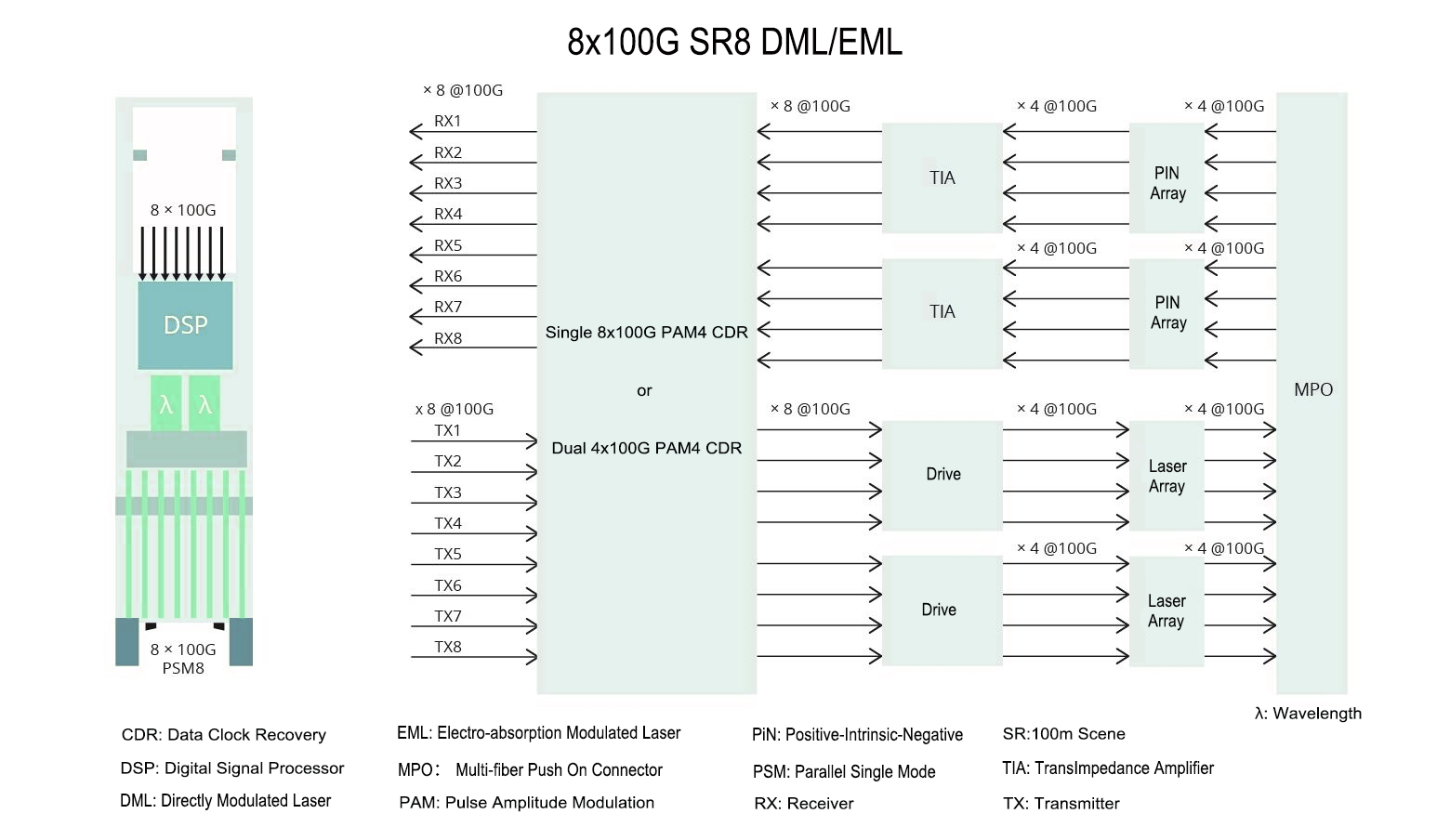
Another 800G SR8 solution leverages silicon photonics (SiPh) technology, utilizing eight SiPh Mach–Zehnder modulators or continuous-wave (CW) lasers for signal modulation. In this solution, the SiPh chip serves as the transmitter, separating the modulator from the light source to enable a shared-laser design that supports parallel multi-channel transmission. With proper control of insertion loss, this fiber transceiver solution can use one or two light sources to drive eight parallel channels, significantly reducing module cost compared to conventional approaches. At the same time, it delivers superior power efficiency, making it an economical and energy-efficient option for 800G short-reach interconnect applications.
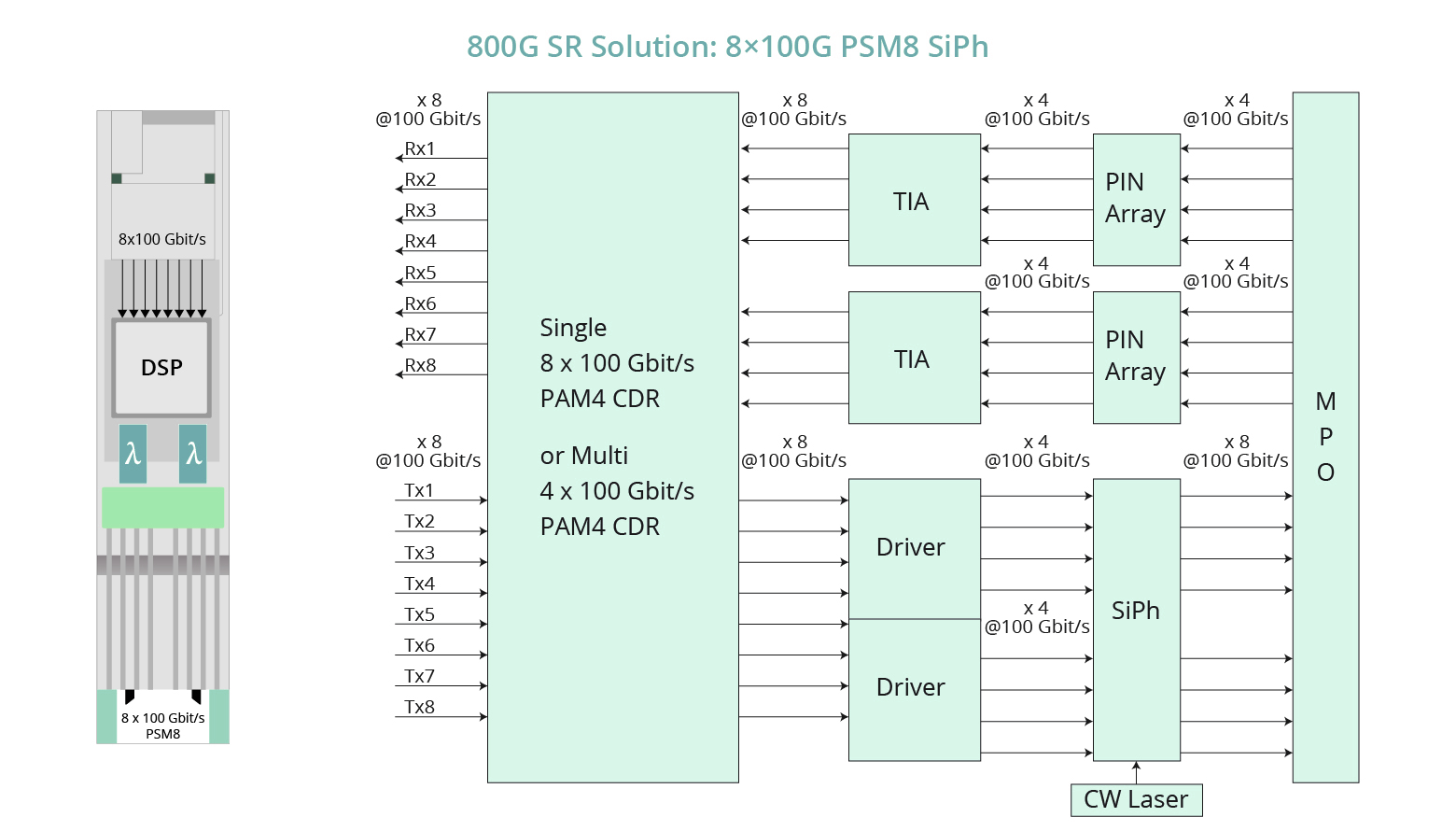
For 800G interconnect applications with transmission distances of up to 500 meters, adopting SiPh technology with eight 100G channels offers no significant cost advantage compared with 400G DR4 SiPh solutions. In fact, using a configuration of four 200G channels proves to be more cost-effective. However, the reliability of 100G optical transceivers still requires further validation to ensure feasibility across broader deployment scenarios. Although the 8-channel parallel design entails higher costs, it may still serve as a practical initial solution under the MSA (Multi-Source Agreement) framework.
As illustrated, the 800G DR4 solution employs four 200G DSPs for signal processing, paired with EML or SiPh optical chips, with all channels operating at the same wavelength. Due to the bandwidth limitations of DML technology, DML components are not considered in this design.
In terms of fiber connectivity, both the transmitter and receiver utilize four PSM4 (Parallel Single-Mode 4-channel) fibers, with all channels transmitting data at the same wavelength. A 12-fiber MPO connector enables compact and efficient optical interconnection, ensuring high performance and reliability for 800G DR/FR medium-reach data center interconnects.
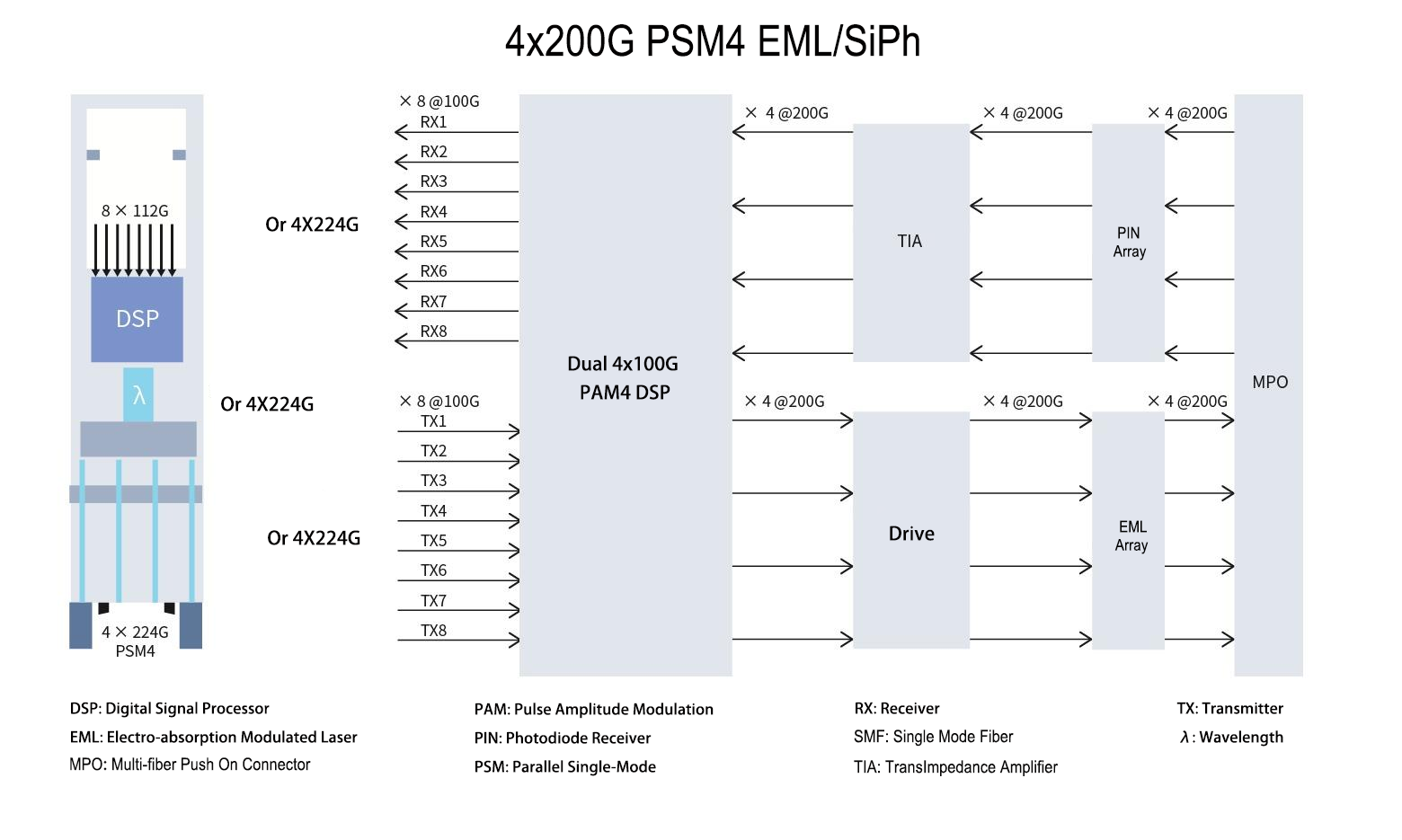
In 800G transmission scenarios exceeding 2 km, single-channel 200G PAM4 technology represents a major breakthrough in optical communications, forming the foundation for 4-channel 800G interconnects. Compared with 100G systems, the symbol rate doubles at 200G, while receiver sensitivity decreases slightly—by approximately 3dB. To maintain receiver sensitivity around –5 dBm, the system incorporates advanced Forward Error Correction (FEC), which enhances signal integrity, effectively corrects bit errors, and ensures stable high-speed transmission.
The 800G FR4 EML solution employs four 200G DSPs paired with CWDM4-compliant EML chips. Both the transmitter and receiver integrate Wavelength Division Multiplexers (WDMs), allowing multiple optical signals to be efficiently multiplexed onto a single CWDM4-standard fiber. For physical connectivity, the design uses dual-LC interfaces, optimizing bandwidth utilization and enabling high-speed, high-efficiency long-distance data transmission.
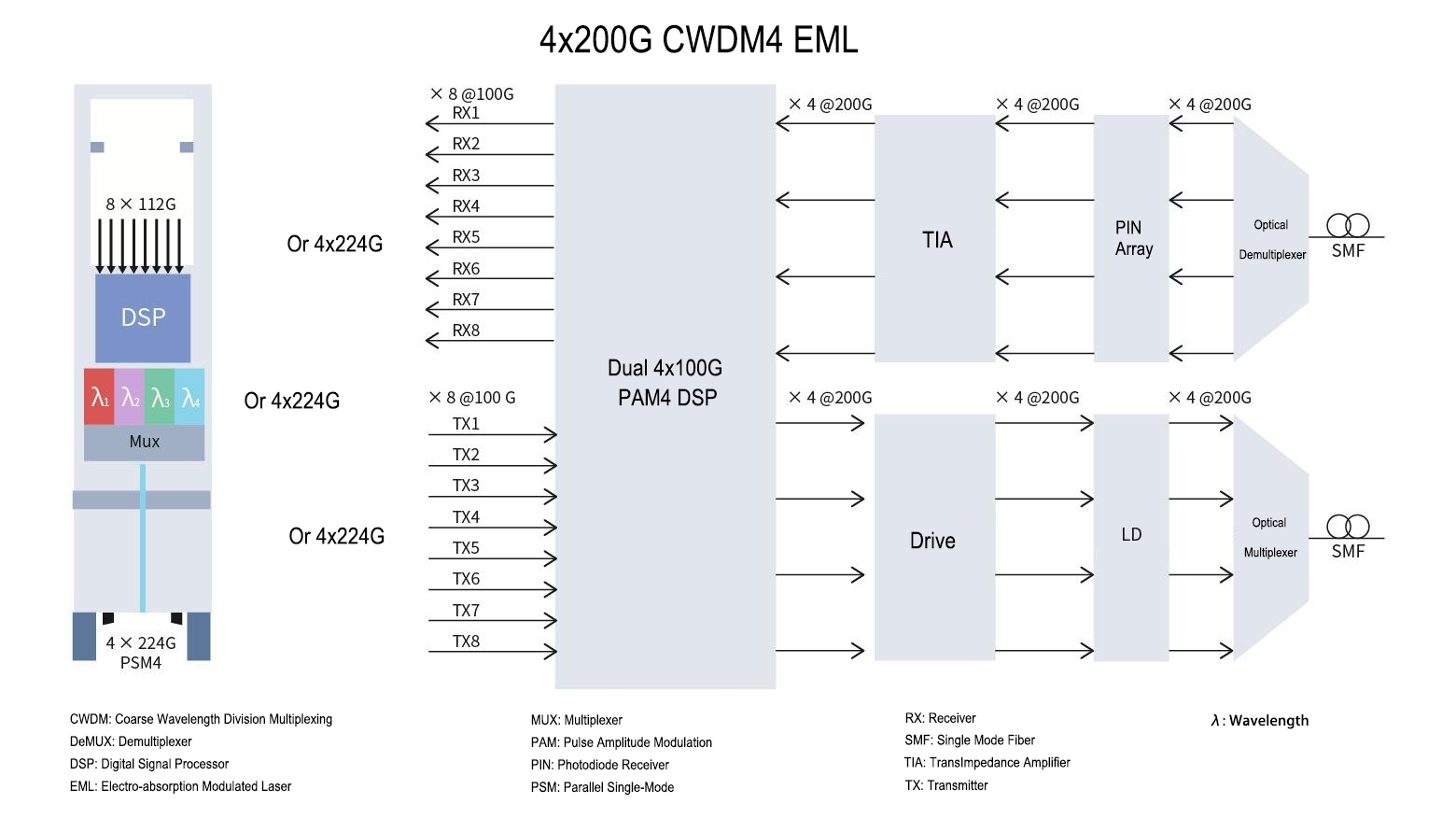
To meet the 10 km transmission requirements of 800G interconnects, the industry has proposed four solutions that take dispersion limitations into account:
800G LWDM8 or nLWDM8: An 8-channel Long-Wavelength Division Multiplexing (LWDM) or narrow-linewidth LWDM (nLWDM) configuration that enhances transmission capacity while optimizing dispersion management.
800G LWDM4 or nLWDM4: A 4-channel LWDM or nLWDM setup that balances transmission capacity and dispersion control.
800G Self-Heterodyne Detection (SHD) Coherent Transmission: Utilizes self-heterodyne coherent detection to improve signal quality and effectively compensate for dispersion effects.
800G Coherent Optical Communication: Employs standard coherent optical transmission technology to achieve greater dispersion tolerance and superior signal integrity, ideal for ultra-long-distance high-speed data transmission.
As illustrated, the 800G LR8 solution integrates eight 100G DSPs paired with LWDM8 EML optical chips. Both the transmitter and receiver incorporate WDMs, efficiently multiplexing multiple signals onto a single LWDM8 fiber. The use of dual-LC connectors ensures high precision and stability of the optical link, delivering robust performance for long-reach 800G interconnect applications.
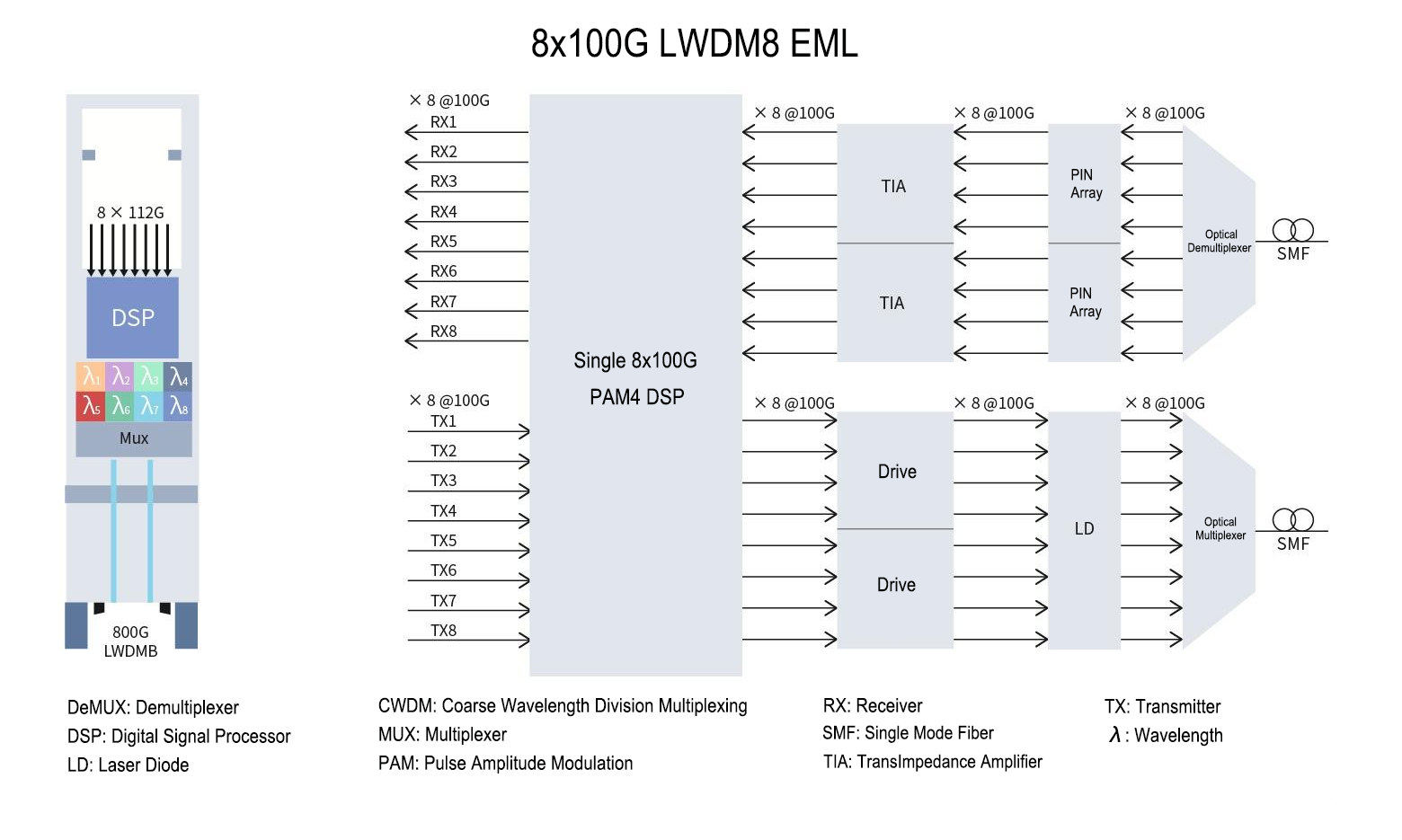
The 800G LR4 fiber module solution employs four 200G DSPs and four EML optical chips, with each chip operating on a distinct LWDM4 wavelength to enable efficient high-speed data transmission.
On the receiver side, the design incorporates 200G PAM4 Avalanche Photodiodes (APDs) to enhance signal detection sensitivity, ensuring signal integrity over extended transmission distances. As illustrated, both the transmitter and receiver are equipped with WDMs. After multiplexing, all signals are transmitted over a single LWDM4 fiber. The system utilizes dual-LC connectors, guaranteeing high-efficiency and stable data transmission and reception across long-reach optical links.

At present, there are two wavelength configuration options: LWDM4 with an 800 GHz channel spacing, and nLWDM4 with a denser 400 GHz spacing. The nLWDM4 scheme offers significant advantages in reducing dispersion compensation costs, lowering power consumption, and simplifying DSP computational complexity. However, achieving these benefits requires the development of new EML chips, indicating that further innovation in optical device technology is still needed.
For long-haul transmissions over 40 km and 80 km, the industry has adopted 800G coherent fiber optical module solutions. These solutions leverage dedicated coherent DSPs and 128 Gbaud Integrated Coherent Transmitter Receiver Optical Subassemblies (IC-TROSAs), combined with dual-LC connectors, to ensure stable, efficient, and high-integrity data transmission across extended distances.
800G optical transceivers are at the forefront of meeting the ever-increasing demand for faster data transmission and higher network efficiency. With advanced technologies enabling ultra-high-speed and high-bandwidth applications, they have become a cornerstone of modern network infrastructure. As a leading innovator in optical networking solutions, UnitekFiber is dedicated to delivering high-performance, reliable, and cost-effective products that drive the evolution of next-generation connectivity. Choose UnitekFiber’s cutting-edge 800G fiber transceiver solutions to keep your network at the forefront.

